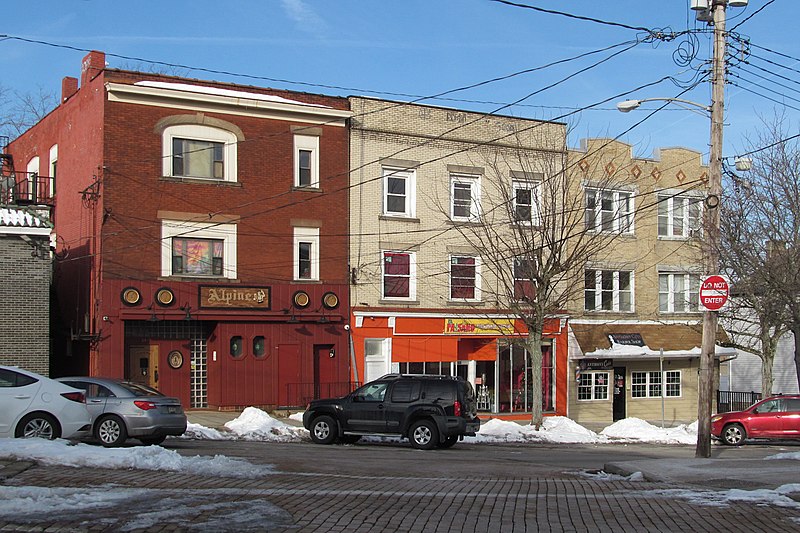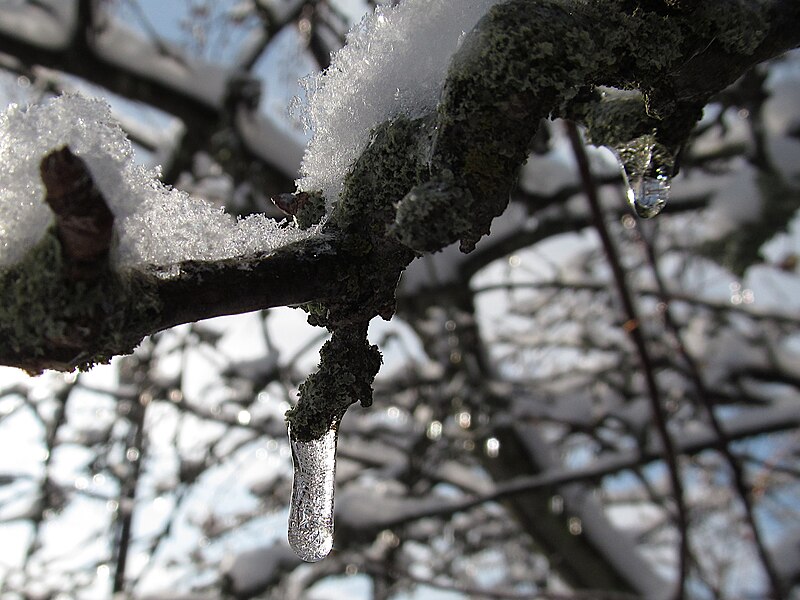
Beechview is something unique in Pittsburgh and very rare in the United States: an early-twentieth-century streetcar suburb where the streetcars still run down the main street as they did when the neighborhood was first laid out. The central business district has had its ups and downs; right now it is a good place to find interesting little ethnic restaurants and groceries. Most of the neighborhood is laid out as a grid in spite of the precipitous hills, but Broadway, the street with the car line, follows the top of the ridge. Beechview Avenue (below) continues the straight line of the business district as Broadway curves off toward the Fallowfield streetcar viaduct and abruptly ends at Fallowfield Avenue, leaving the streetcars to continue on their own right-of-way.

Following the ancient tradition that the street with the tracks belongs to the streetcar company, the Port Authority is responsible for maintaining Broadway.
Streetcar service in Beechview is interrupted right now because the Saw Mill Run viaduct has been closed for emergency repairs. The Red Line will roll up Broadway again as soon as the bridge reopens.












